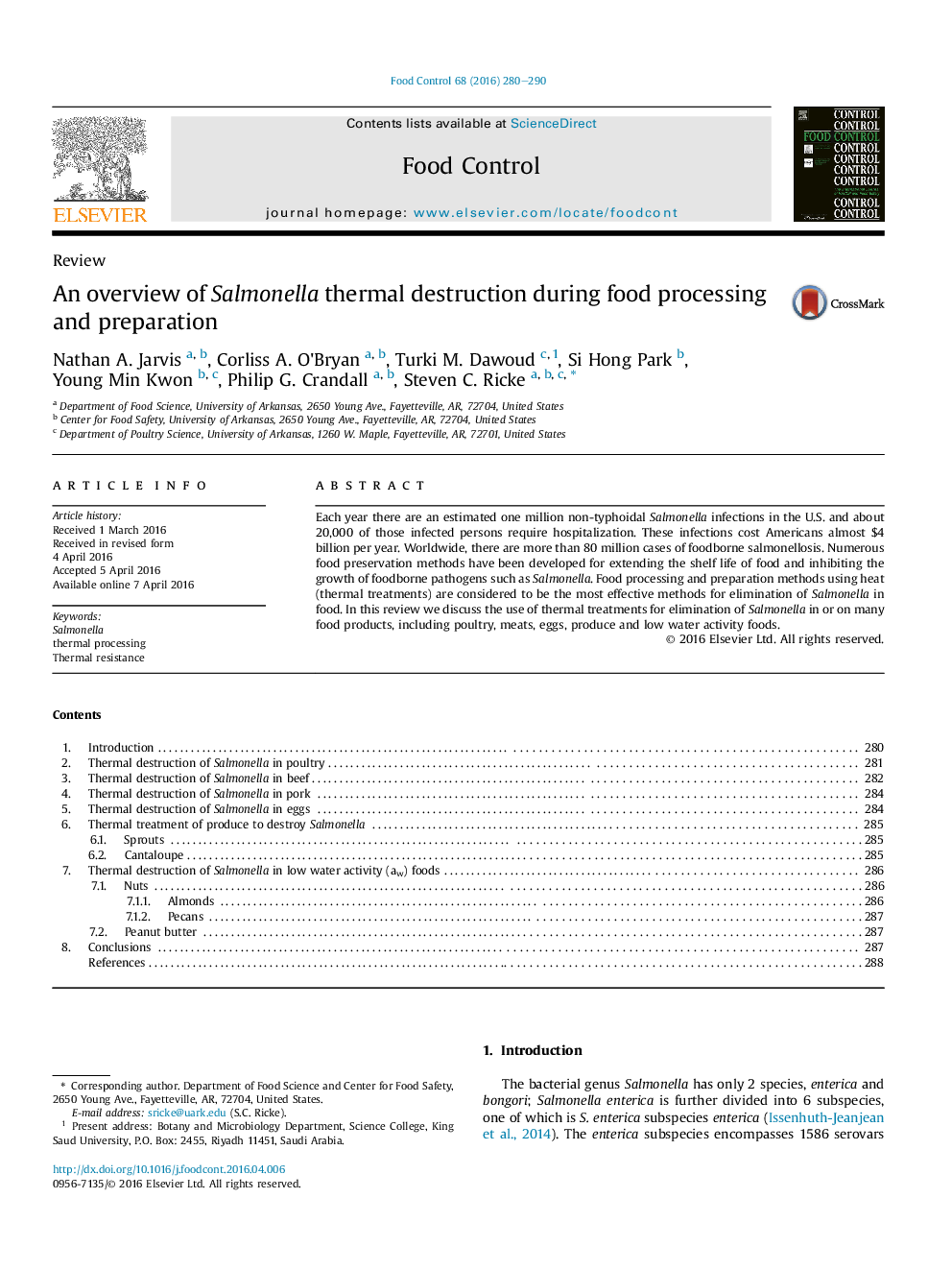| Article ID | Journal | Published Year | Pages | File Type |
|---|---|---|---|---|
| 4559053 | Food Control | 2016 | 11 Pages |
•Salmonella spp continue to cause foodborne illnesses worldwide.•Thermal treatment is an effective method of eliminating Salmonella from food products.•Heat resistance of Salmonella is impacted by the food matrix.•Heat resistance of Salmonella is impacted by serovar differences.
Each year there are an estimated one million non-typhoidal Salmonella infections in the U.S. and about 20,000 of those infected persons require hospitalization. These infections cost Americans almost $4 billion per year. Worldwide, there are more than 80 million cases of foodborne salmonellosis. Numerous food preservation methods have been developed for extending the shelf life of food and inhibiting the growth of foodborne pathogens such as Salmonella. Food processing and preparation methods using heat (thermal treatments) are considered to be the most effective methods for elimination of Salmonella in food. In this review we discuss the use of thermal treatments for elimination of Salmonella in or on many food products, including poultry, meats, eggs, produce and low water activity foods.
